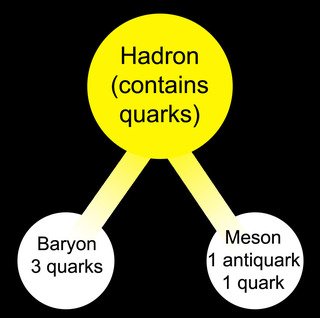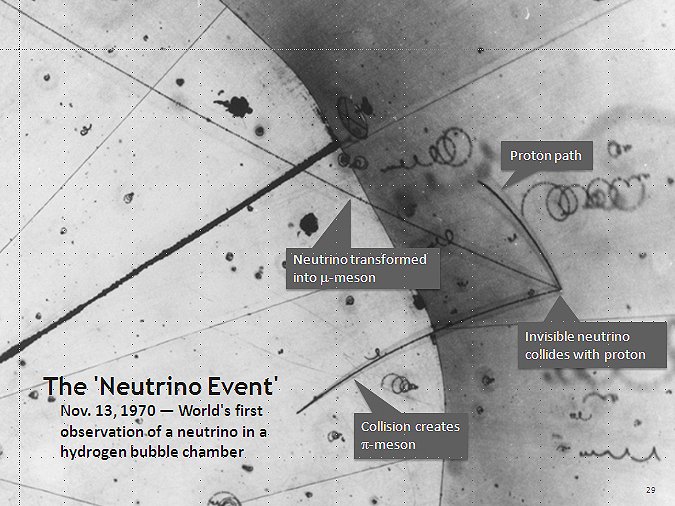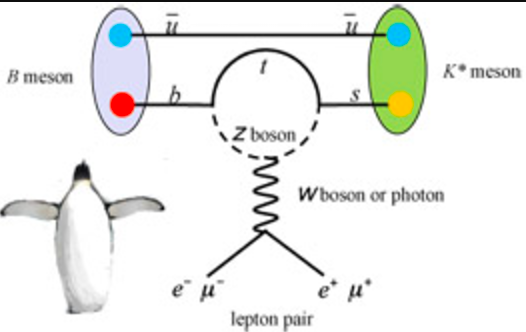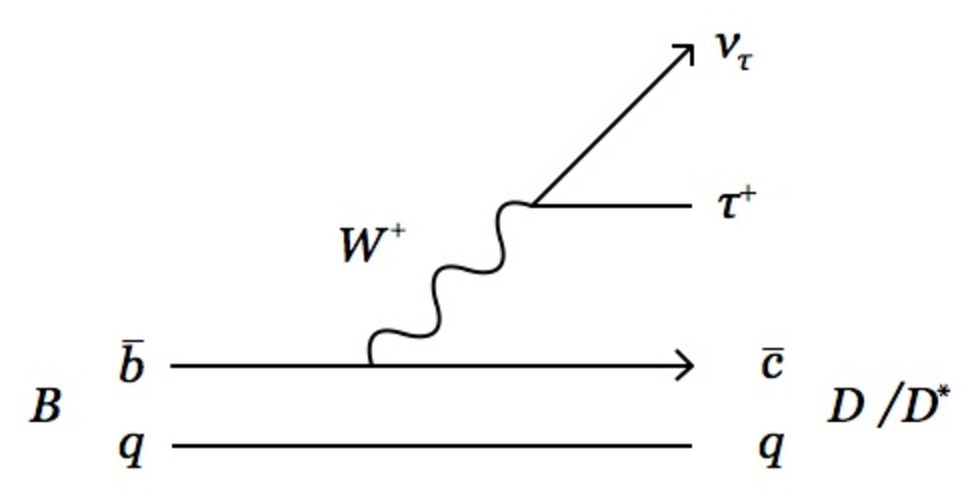The Large Hadron Collider has collected so far a huge amount of data, and this will continue in the next decades. Several experiments are run around the LHC machine, which includes in particular the two general purpose experiments ATLAS and CMS experiments.
These are denoted as general purpose experiments because they are targeting the discovery of new phenomena in a very broad sense. However, nothing is observed in data so far.

[image credits: LHCb @ CERN]
There are however other experiments around the LHC, one of them being the LHCb experiment, whose detector is schematically represented on the right.
This experiment has observed unexpected hints for new phenomena that cannot be explained in the context of the Standard Model of particle physics.
Although we cannot claim any discovery yet, these hints are well admitted today.
This post is the follow-up of this earlier post of mine where I introduced LHCb and flavor physics. The new phenomena that I will discuss are indeed connected to flavor physics and LHCb.
QUARKS AND HADRONS
All the observed flavor anomalies are connected to B-mesons, D-mesons and kaons. And how better start a post as with nice names? I don’t know. But I will… go back to the basics first: quarks and hadrons.
As I explained it in a post I wrote almost a year ago on Steemit (yes, it is almost a year I am around! Time flies), there are several elementary particles and some of them are called quarks.
Quarks are particles sensitive to the strong interactions and their dynamics (or the way they behave) is dictated by quantum chromodynamics, or QCD in short.
The strong interaction is so strong (yep the naming ‘strong’ is not random… there is something behind) that it allows quarks to form bound states generically named hadrons.
Although there are six quarks in nature, only five of them contribute to the formation of bound states: the up, down, strange, charm and bottom quarks (the top quark decays before being able to do anything else).

[image credits: FNAL]
There are several classes of bound states, or hadrons, and they differ according to the underlying quark/antiquark structure. We have, for instance, baryons and mesons to name the most well known.
Each baryon is made of (roughly) three quarks (or three antiquarks), and the best representative of this class of (composite) particles are definitely the neutron and the proton.
The bound states that I am interested in today are named mesons and they are made of one quark and one antiquark. The properties of some of them, studied in details by the LHCb experiment, exhibit disagreement with the Standard Model.
Before detailing what is going on with these mesons, I would like to emphasize that other more exotic bound states exist too. They are named tetraquarks (2 quarks and 2 antiquarks) and pentaquarks (4 quarks and 1 antiquark).
They interest high-energy physicists a lot, in particular as the LHCb experiment (again ;) ) has discovered some of them during the last three years. More information is available here for those interested.
Finally, it is interesting to mention that hexaquarks could also exist, in principle. While the theory is there, these beast have not been observed so far (even in LHCb).
B-MESONS, D-MESONS AND KAONS
All the anomalies I want to talk about are related to specific mesons: heavy flavor mesons. But what are those guys?
These particles are composite systems, as said above, made of exactly one quark and one antiquark.

[image credits: Wikipedia]
For instance, the most well-known mesons are the pions. They played, for instance, a key role in the discovery of the neutrino, as shown on the picture on the right.
This picture represents tracks of particles in a bubble chamber, and the properties of the various tracks allow physicists to understand what happened in this reaction. The lowest track in the picture, right in the middle of it, is the one of a pion.
Pions consist of systems made of the lightest flavors of quarks (up, down) and they can be electrically neutral or positively or negatively charged (depending on their quark/antiquark content). This comes from the fact that up-antiup or down-antidown pairs are neutral, up-antidown and down-antiup are respectively positively and negatively charged.
Now, let us go back to the topic. Mesons can also be made of heavier quarks like strange, charm or bottom quarks. Those are respectively named kaons, D-mesons and B-mesons.
B-mesons were in particular scrutinized by the LHCb experiment that study their properties very deeply to understand better how the matter-antimatter asymmetry could come from.
FLAVOR ANOMALIES IN B-MESON DECAYS TO KAONS
Now, what about these anomalies?

[image credits: Belle @ KEK]
The first channel where something weird is happening consists in the study of the decay of a B-meson into a kaon and a pair of electrons or a pair of muons.
Also known as a penguin decay. Now you got the title of the post :)
Those decays are rare, and the Standard Model predicts that one should see as much decays into a kaon and an electron-positron pair as decays into a kaon and a muon-antimuon pair.
We are dealing with something called lepton universality: electrons/positrons or muons/antimuons should not make any difference.
LHCb is however observing much more electrons than muons. The number of muons is actually of about 3/4 the number of electrons. The chances for this to be a fluctuation are actually of about 1 in 100.
This is why we are talking about an anomaly and not an evidence (at least yet): This number is still not small enough.
Moreover, those hints persist when we investigate different kaon species! Combining everything, we get a probability for a fluctuation equal to one chance out of 15.000… Still not enough to claim a discovery, but… We start to be close!
A similar effect is observed when the B-mesons are decaying into another strange meson (a meson made of strange quarks) called the phi. Damned: two hints now…
FLAVOR ANOMALIES IN B-MESON DECAYS TO D-MESONS

[image credits: Quantum diaries]
But the story does not end there: B-mesons can also decay into a D meson, a charged lepton and a neutrino. A diagram showing what is going on when a tau lepton is involved is shown on the right.
LHCb has measured the rates when the lepton is a tau, and when it is an electron or a muon. Again, a deviation with respect to the predictions is observed, at the same level as before!
On top of that, it is good to remember that the earlier BaBar experiment at Stanford has recorded some of these anomalies too, but in a more confuse way (due to less data).
TAKE-HOME MESSAGE AND REFERENCES
One of the important message of this post is that the LHCb experiment at the LHC at CERN has made crucial and important observations during the last few years. I am not only talking about the tetraquark and pentaquark business (that I may discuss in another post), but I am actually referring to the so-called flavor anomalies in the decay of B-mesons.
There are real processes named penguins in flavor physics, and the corresponding Standard Model predictions do not seem to agree with data… Other processes involving charmed mesons are also showing hints for unexplained stuff.
To make a long story short: lepton universality seems really to be in a bad shape… But we need more data to draw any conclusive statements.
To get more information on this topic, I recommend the following links:
- One can find more information on these excesses on the LHCb publication webpage.
- A good summary of the excesses (with links to the exact publications) can be found in this article and the references there in.
